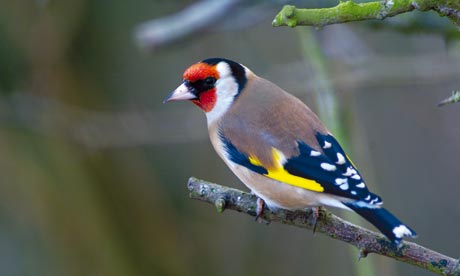
A goldfinch in Northumberland. Photo: Ray Kennedy/RSPB
The bright red face and yellow wing patches of the goldfinch are nearly five times more likely to be seen in British gardens than they were in the mid-1990s, according to the British Trust for Ornithology (BTO).
The increasing use of fine seeds, such as nyjer seed, and sunflower hearts in garden feeders has so successfully wooed the colourful visitor that it has flown from 20th place to 10th on the list of most commonly reported species since the BTO's Garden BirdWatch survey began in 1995.
More than half the 14,500 volunteers taking part in the project in 2011 saw a goldfinch but as this bird, great spotted woodpecker, long-tailed tit and increasingly ubiquitous wood-pigeon rose up the league table, the well documented decline of the house sparrow continued, with starling, greenfinch, wren, and song thrush all dropping down too. Blackbird numbers fell sharply in 2011 compared with the previous two years.
Outside the top 20, there were more sightings of species such as brambling, bullfinch, siskin, reed bunting and lesser redpoll. Black caps are increasingly over-wintering in England too as generations of birdsfrom central Europe fly west rather than south, a trend that started in the 1960s.
.jpeg)